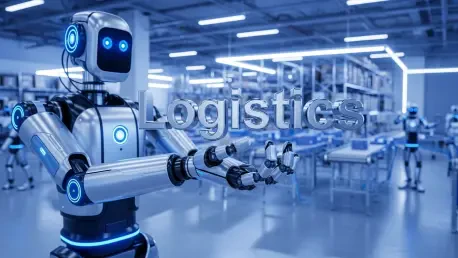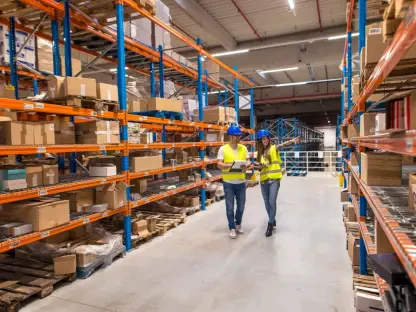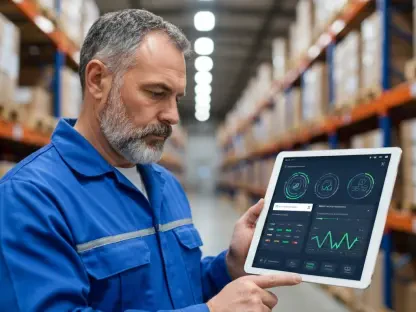The logistics sector is a major contributor to global greenhouse gas emissions, responsible for approximately 7% of total emissions. As companies face increasing pressure to adopt sustainable practices, artificial intelligence (AI) emerges as a powerful tool with the potential to transform logistics for a greener future. Inefficiencies in fleet management, empty mileage, and suboptimal routing contribute to both environmental harm and financial losses. AI-driven solutions promise to address these challenges, facilitating significant environmental savings while enhancing operational efficiency. By incorporating AI into logistics processes, companies can optimize fleet maintenance, streamline transport operations, and reduce overall emissions. The emphasis today is on leveraging AI not only to cut costs but also to lead the industry toward more sustainable practices. As AI evolves, its role in revolutionizing logistics becomes ever more promising.
Optimizing Fleet Maintenance with AI
In the quest for a more sustainable logistics future, fleet maintenance emerges as a crucial area that often goes unnoticed. In traditional systems, fleet maintenance is caught between the extremes of over-serviced and under-serviced vehicles. Over-serviced vehicles waste substantial resources, while under-serviced vehicles face increased risks of breakdowns and require costly repairs or early replacement, scenarios detrimental to both the planet and businesses. AI introduces predictive maintenance strategies that promise to transcend these limitations. In North America, these practices have taken a strong hold, powered by AI that thrives on standardized maintenance data. Critical to this progress is the adoption of frameworks like the Vehicle Maintenance Reporting Standards (VMRS), crafted by the American Trucking Association’s Technology and Maintenance Council. These standards provide a universal language for tracking maintenance items, enabling AI systems to make informed decisions at scale.
However, despite such advancements, maintenance data remains heavily fragmented globally, hindering AI’s full potential. A cohesive data foundation is paramount to realize the benefits of AI-powered fleet maintenance. This involves adopting global standards to operate as a common language across various fleets and platforms. Some platforms are spearheading initiatives to create open, interoperable data models that facilitate global adoption. These models lay the groundwork for transforming how maintenance is approached, allowing for predictive practices that reduce unnecessary resource use and emissions. By prioritizing data standardization, the logistics industry can unlock unprecedented levels of sustainability and efficiency. The transition to AI-driven, predictive maintenance leads to fewer repairs, more efficient use of materials, and significant reductions in emissions. As these technologies become integral to logistics operations, their environmental benefits are expected to be substantial.
Reducing Empty Mileage and Optimizing Routes
An ongoing challenge within the logistics sector is the issue of empty mileage, where trucks travel without cargo, leading to inefficient fuel consumption and increased emissions. While some level of inefficiency is unavoidable due to network and geographical reasons, AI has shown its capability in addressing a significant portion of this problem using advances in technology. AI-powered systems leverage both real-time and historical data to design optimal routes, plan multi-stop loads, and dynamically adjust transit plans to account for variables such as traffic, delays, and weather conditions. Cloud-based platforms enhance these capabilities by matching loads with carriers in real time, thereby minimizing wait times at docks. This integration optimizes vehicle utilization and significantly cuts down emissions associated with each journey.
AI further aids in streamlining the complexities of just-in-time logistics, a system that prioritizes efficiency but is susceptible to disruptions. With AI, transport sourcing is revolutionized through autonomous procurement tools. These tools utilize advanced AI techniques to analyze requests, identify suitable partners, and optimize selections based on environmental impacts as well as time and cost considerations. Moreover, AI supports intelligent load planning, ensuring maximum utilization of truck space and reducing the total number of journeys required. This collective optimization saves time and resources while decreasing emissions per kilometer traveled. As AI infiltrates the logistics sector, its tools make transport operations more efficient and environmentally friendly. The consequent reduction in carbon footprint marks a significant step toward a sustainable future in logistics.
Collaboration and Data Sharing for a Sustainable Future
The successful integration of AI into the logistics industry for greener outcomes largely hinges on collaboration across the sector. AI depends on reliable, accessible, and extensive data to deliver meaningful insights. This necessitates the standardization of maintenance schedules, routing algorithms, and data sharing among carriers, shippers, OEMs, and tech providers. As companies adopt AI, cooperation is vital to ensure data is consistent, accessible, and can be effectively utilized for the greater good. Some industry players are already making strides by focusing on interoperability, creating frameworks that allow different systems and platforms to work in harmony. Establishing common standards facilitates the efficient deployment of AI solutions, fostering an environment where technological and sustainability goals align.
Despite the energy demands of AI, particularly the compute-intensive processes found in generative AI models, the specific AI applications in logistics are designed to be less energy-consuming. This ensures the benefits of efficiency outweigh the costs, leading to a net positive impact on sustainability. The logistics sector stands on the brink of transformation, with AI at its core, promising not just improved operational efficiency but also a concerted push towards environmental stewardship. Industry-wide initiatives that emphasize standardized frameworks and cooperative data ecosystems lay the foundation for a cleaner, more resilient logistics future. By focusing on essential elements of standardization and interoperability, AI shapes logistics operations in a way that meets both business and environmental objectives.
Paving the Path Toward Sustainability
Fleet maintenance plays a pivotal role in the pursuit of a sustainable future in logistics, although it is often overlooked. Traditional systems grapple with the extremes: vehicles are either excessively serviced or neglected. Over-servicing leads to wasted resources, while under-servicing results in breakdowns and costly repairs, harming both businesses and the environment. AI revolutionizes this with predictive maintenance, particularly in North America, using AI on standardized maintenance data. Key to this is the Vehicle Maintenance Reporting Standards (VMRS) from the American Trucking Association’s Technology and Maintenance Council, providing a consistent language for maintenance tracking and allowing AI to make informed decisions.
However, globally, maintenance data is fragmented, limiting AI’s potential. Adopting worldwide standards for data integration is crucial. Initiatives aim to create open, interoperable data models for this purpose, transforming maintenance into a predictive practice that reduces resource use and emissions. Emphasizing data standardization in logistics can boost sustainability and efficiency. AI-driven maintenance promises less frequent repairs, efficient resource use, and emission reductions, significantly benefiting the environment.









